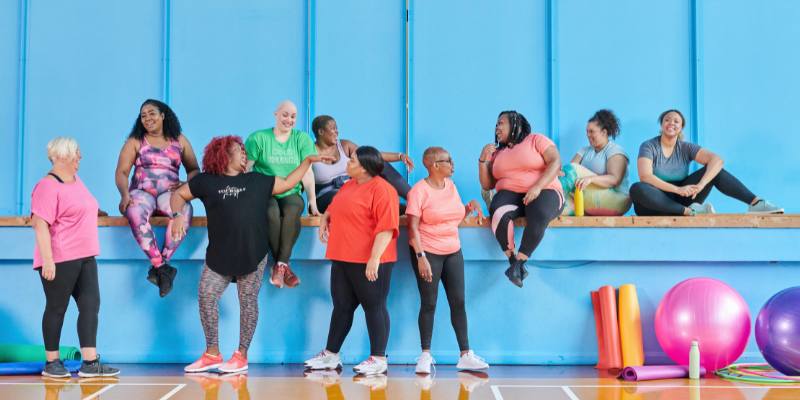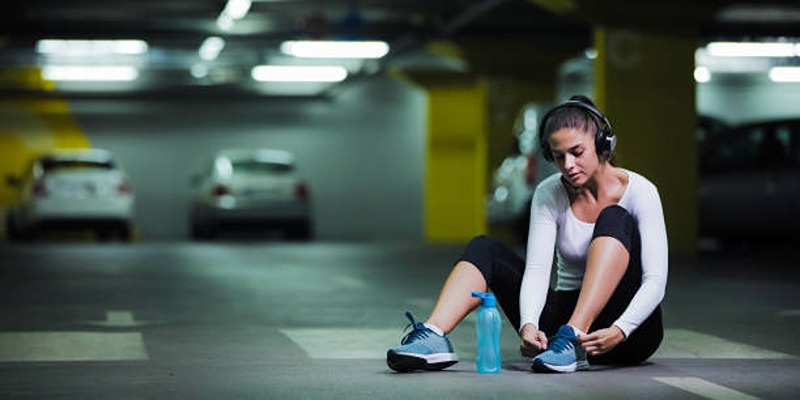Behavior change isn't just about setting goals—it's about reshaping your mindset, overcoming obstacles, and creating sustainable habits that support long-term health. Many people struggle to maintain physical activity routines, not because they lack motivation but because they lack the tools to adapt to and sustain behavioral changes.
Understanding how to change behaviors effectively can help you unlock a more active lifestyle. In this article, we explore how behavior change can positively impact your physical activity habits and help you build a stronger, healthier future.
Understanding Behavior Change:
Behavior change is the process of modifying existing habits or adopting new ones to improve one's lifestyle or well-being. When it comes to physical activity, this change involves transitioning from a sedentary or inconsistent routine to one that incorporates regular movement, whether it's walking, working out, or engaging in any form of active living.
Behavior change is not a single step. It's a journey involving awareness, readiness, action, and maintenance. Models like the Transtheoretical Model (Stages of Change) outline five stages: pre-contemplation, contemplation, preparation, action, and maintenance. Recognizing your current stage helps tailor your approach and builds confidence along the way.
Why Does Behavior Change Matter in Physical Activity?
Physical activity is more than exercise. It's a key element in preventing chronic diseases, improving mental health, increasing energy levels, and promoting longevity. However, simply knowing the benefits isn't always enough to take action.
Behavior change bridges the gap between intention and action. It helps you shift from passive knowledge to active commitment, making healthy movement part of your lifestyle. People who incorporate behavior change techniques are more likely to sustain their physical activity habits in the long term.
Common Barriers to Behavior Change:
Understanding what stands in your way is crucial to making progress. Some of the most common obstacles include:
- Lack of time:
Busy schedules often push exercise aside. When physical activity feels like a big time commitment, it becomes easy to skip. But even short bursts—like 10-minute walks or quick stretches—can be effective and manageable within a packed day.
- Low motivation:
Without clear, personal goals, it's tough to stay consistent. Vague intentions, such as "get fit," don't provide direction. Motivation fades unless you tie it to meaningful reasons, like better energy, mood, or health.
- Fear of failure:
Past failed attempts can make you hesitant to try again. You may fear repeating mistakes or not seeing results. But each effort teaches something new. Progress comes from striving, not from being perfect.

- Negative self-talk:
Thoughts like "I can't do this" or "I'm not athletic" can stop progress before it begins. These limiting beliefs lower confidence. Replacing them with encouraging thoughts helps build a more positive, resilient mindset.
Behavior change techniques help reframe these barriers as opportunities for growth, building resilience, and accountability.
Key Strategies to Support Behavior Change:
- Set SMART goals: Create goals that are Specific, Measurable, Achievable, Relevant, and Time-bound. Instead of saying, "I’ll exercise more," try, "I'll walk for 20 minutes after lunch five days a week." SMART goals provide structure, make tracking easier, and help you stay focused and accountable as you move toward your physical activity goals.

- Use habit stacking: Connect a new activity to an existing routine to make it easier to remember. For example, do 10 minutes of stretching right after brushing your teeth or walking in place during your morning coffee. Pairing new behaviors with familiar ones reduces friction and helps establish lasting habits.
- Track progress: Use journals, mobile apps, or wearable devices to record your workouts, steps, or mood after physical activity. Tracking builds awareness of your efforts, highlights patterns, and offers tangible proof of progress. It also allows for small course corrections when needed.
- Celebrate small wins: Acknowledge and reward even minor accomplishments, like completing a workout after a long day or choosing stairs over the elevator. Celebrating these moments boosts your mood, builds momentum, and reinforces your commitment to staying active.
- Create environmental cues: Set up visual or physical reminders that prompt movement. Lay out workout clothes the night before, place a yoga mat where you'll see it, or set phone reminders to take activity breaks. Your environment can either support or hinder change—make it work in your favor.
These strategies support gradual shifts in mindset and behavior, which are more sustainable than drastic changes.
The Role of Mindset in Physical Activity:
Your thoughts shape your actions. A growth mindset—believing that your abilities can improve with effort—is essential in behavior change. Instead of thinking, "I'm not athletic," shift to "I can become active with practice." Also, be kind to yourself during setbacks. Progress isn't linear, and self-compassion prevents you from giving up when challenges arise. Behavior change encourages positive self-dialogue, reducing the likelihood of all-or-nothing thinking.
Incorporating Physical Activity into Daily Life:
- You don't need a gym membership or hours of free time to stay active. Here are practical ways to add movement into your everyday life:
- Walk or bike to errands when possible.
- Stretch or do light exercises during TV time.
- Take short breaks to move between work tasks.
- Use stairs instead of elevators.
Behavior change encourages small, repeatable actions that, over time, become second nature.
Technology as a Tool for Behavior Change:
Modern tools, such as fitness trackers, mobile apps, and online communities, make tracking and motivation easier. Apps can remind you to move, log progress, and connect you with like-minded individuals. But remember: technology is a tool, not a solution. True change comes from commitment, reflection, and adapting your behaviors to fit your real life.
Conclusion
A strong mindset is the foundation of lasting physical activity habits. When you believe in your ability to improve, stay open to growth, and approach setbacks with resilience, your body follows your lead. Remember, consistency begins in the mind—every step, stretch, or lift is easier when driven by positive beliefs.
You don't need to be perfect; you need to stay committed. Start small, be kind to yourself, and celebrate every effort. Train your thoughts like your muscles—with patience and care. Begin today by choosing one empowering mindset shift—and let it guide your movement forward.












